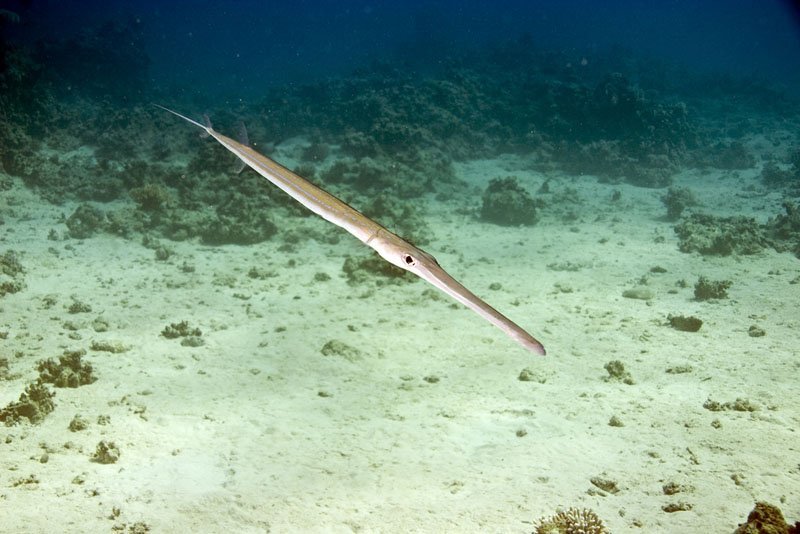Trumpetfishes and Cornetfishes

Trumpetfishes and Cornetfishes (Aulostomidae, Fistulariidae) Overview
Trumpetfishes and cornetfishes are the most common fish predators on Hawaii's reefs. Trumpetfishes have stiff and long bodies and hardly bend as they swim. Cornetfishes on the other hand flex as they swim.
Both species are daytime hunters, usually in the early morning or late afternoon hours. They follow small fish around and when close, they suck them into their tubelike mouths.
Their mouths can expand quite a bit, so they are able to swallow fish that are as wide as their own bodies are. The Hawaiian name for both trumpetfishes and cornetfishes is nunu or nuhu.
Frequently Asked Questions
Why are they called trumpetfish and cornetfish?
Their long, narrow bodies and tubular snouts resemble musical instruments, which inspired the names trumpetfish and cornetfish.
How do trumpetfish and cornetfish catch their prey?
They use a stealthy approach, then suddenly expand their tubular mouths to suck in small fish with powerful suction.
Are they active during the day or night?
Both trumpetfishes and cornetfishes are diurnal hunters, most active in the early morning and late afternoon.
Where can I see them in Hawaii?
They are common on coral reefs throughout Hawaii. Look for their slender bodies hovering vertically among corals and sea whips.
What is their Hawaiian name?
Both trumpetfishes and cornetfishes are known as nunu or nuhu in the Hawaiian language.








